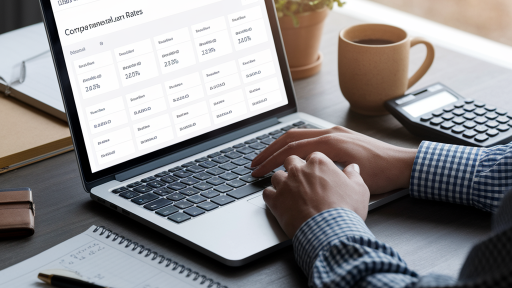Navigating the world of personal finance can sometimes feel overwhelming, but securing a personal loan doesn’t have to be a complicated ordeal. Whether you’re looking to consolidate high-interest debt, fund a home renovation project, or cover an unexpected expense, a personal loan can be an incredibly useful financial tool when managed wisely.
This guide is designed to demystify the process, breaking it down into simple, actionable steps. We’ll walk you through everything from assessing your financial standing to receiving your funds, empowering you to make an informed decision with confidence.
Understanding Personal Loans: The Basics Before You Apply
Before diving into the application process, it’s crucial to grasp what a personal loan is and how it works. A solid foundation of knowledge will help you determine if it’s the right choice for your financial situation.
What is a Personal Loan?
A personal loan is a type of installment loan that you borrow from a financial institution like a bank, credit union, or online lender. You receive the money as a lump sum and repay it, plus interest, in fixed monthly payments over a predetermined period, known as the loan term. Most personal loans are “unsecured,” which means they don’t require collateral like a house or car to back them up. This makes them accessible, but it also means the lender relies heavily on your creditworthiness to approve the loan.
Common Uses for Personal Loans
One of the biggest advantages of personal loans is their flexibility. Unlike a mortgage or auto loan, you can typically use the funds for almost any purpose. Some of the most common reasons people get personal loans include:
- Debt Consolidation: Combining multiple high-interest debts (like credit cards) into a single loan with a potentially lower interest rate.
- Home Improvement: Financing renovations, repairs, or upgrades to your property without taking out a home equity loan.
- Major Purchases: Covering the cost of a significant expense, such as new appliances, furniture, or even a wedding.
- Medical Expenses: Paying for medical or dental procedures not fully covered by insurance.
- Emergency Funding: Handling unexpected costs like a major car repair or a sudden job loss.
Step 1: Assess Your Financial Health
Before you even start looking at lenders, the most critical first step is to look inward at your own finances. Lenders will scrutinize your financial health to determine your eligibility and the interest rate you’ll be offered. Taking stock of this now will save you time and potential disappointment later.
Check Your Credit Score
Your credit score is one of the most significant factors in a loan application. It’s a three-digit number that represents your creditworthiness, and a higher score generally translates to better loan offers and lower interest rates. You can get your credit report for free from the major credit bureaus—Experian, Equifax, and TransUnion. Review it for any errors that could be dragging your score down and dispute them if necessary.
Generally, credit scores fall into these ranges:
- Excellent: 800-850
- Very Good: 740-799
- Good: 670-739
- Fair: 580-669
- Poor: 300-579
Calculate Your Debt-to-Income (DTI) Ratio
Your debt-to-income (DTI) ratio is another key metric lenders use. It’s the percentage of your gross monthly income that goes toward paying your monthly debt obligations. Lenders use it to gauge your ability to manage monthly payments and repay new debt. To calculate your DTI, add up all your monthly debt payments (mortgage/rent, car loans, credit card minimums, student loans) and divide that by your gross monthly income. Most lenders prefer a DTI ratio below 43%, with many favoring 36% or lower for the best rates.
Step 2: Determine How Much You Need to Borrow
Once you have a clear picture of your financial standing, it’s time to figure out the exact loan amount you need. This requires a balance between covering your expenses and ensuring you can comfortably afford the repayment.
Be Realistic About Your Needs
Calculate the precise amount you need to cover your expense. If you’re consolidating debt, add up all the balances. If you’re renovating a kitchen, get detailed quotes. It can be tempting to borrow a little extra “just in case,” but this will only increase your total interest costs and monthly payment. Also, remember to ask lenders about origination fees, which are sometimes deducted from the loan proceeds. You may need to borrow slightly more to account for this fee.
Can You Afford the Monthly Payments?
Use an online personal loan calculator to estimate your potential monthly payments based on different loan amounts, interest rates, and terms. This is a crucial step. A loan that seems affordable over five years might stretch your budget too thin. Make sure the estimated monthly payment fits comfortably within your monthly budget without causing financial strain.
Step 3: Research and Compare Lenders
Not all lenders are created equal. Rates, fees, and terms can vary significantly, so it’s essential to shop around to find the best fit for your needs. There are three primary types of lenders to consider.
Types of Lenders
| Lender Type | Pros | Cons |
|---|---|---|
| Traditional Banks | Potentially better rates for existing customers, in-person service. | Stricter credit requirements, slower funding process. |
| Credit Unions | Often offer lower interest rates and more flexible terms, member-focused. | You must be a member to apply, may have fewer tech features. |
| Online Lenders | Fast application and funding, convenient online process, often more lenient credit criteria. | Can have higher rates, no in-person support. |
Key Factors to Compare
As you evaluate different lenders, focus on these critical factors:
- Annual Percentage Rate (APR): This is the most important number. The APR includes the interest rate plus any fees (like origination fees), giving you the true annual cost of borrowing.
- Loan Terms: This is the length of the repayment period, typically ranging from 2 to 7 years. A longer term means lower monthly payments but more interest paid overall. A shorter term means higher payments but less total interest.
- Fees: Look for origination fees, late payment fees, and especially prepayment penalties, which charge you for paying off the loan early.
- Customer Reviews: Check online reviews to see what other borrowers have experienced with the lender’s customer service and application process.
Step 4: Get Pre-Qualified and Compare Offers
Pre-qualification is your best tool for shopping around without damaging your credit. It allows you to see the specific rates and terms you’re likely to receive from multiple lenders.
The Power of Pre-Qualification
Most online lenders and many banks offer a pre-qualification process that requires only basic financial information. They perform a “soft credit inquiry,” which does not affect your credit score. This is the perfect way to gather multiple loan offers and compare them side-by-side to find the most competitive option for your situation. You can learn more about how lenders use your credit score to make these initial decisions.
Step 5: Gather Your Documents and Submit the Application
After choosing the best loan offer, it’s time to move forward with the formal application. This part of the process requires detailed documentation to verify your identity and income.
Commonly Required Documents
To streamline the process, have these documents ready before you apply:
- Proof of Identity: A government-issued photo ID, such as a driver’s license or passport.
- Proof of Address: A recent utility bill or lease agreement with your name and address.
- Proof of Income: Recent pay stubs, W-2 forms, or tax returns if you’re self-employed.
- Bank Statements: To verify your income and cash flow.
- Employment Information: Your employer’s name and contact information.
The Formal Application Process
When you submit the formal application, the lender will perform a “hard credit inquiry.” This will appear on your credit report and can cause your score to dip by a few points temporarily. For this reason, it’s best to submit all your loan applications within a short time frame (usually 14-45 days) so they are treated as a single inquiry by credit scoring models. Be sure to double-check all information for accuracy before submitting.
Step 6: Review the Loan Agreement and Receive Funds
Once your application is approved, you’re on the final step. Before you celebrate, carefully review the final loan agreement. This is a legally binding contract, so you need to understand every detail.
Read the Fine Print
Look closely at the final APR, the exact monthly payment amount, the total number of payments, and the total cost of the loan. Confirm there are no prepayment penalties and that all other fees match what you were told. If anything is unclear, ask the lender for clarification before signing. After you sign, the funds are typically deposited directly into your bank account, sometimes in as little as one business day.
Conclusion: Taking the Next Step with Confidence
Securing a personal loan is a straightforward process when you approach it systematically. By assessing your finances, determining your needs, comparing lenders, and carefully reviewing your final offer, you can find a loan that helps you achieve your financial goals without adding unnecessary stress. Remember, a loan is a serious commitment, but with responsible planning, it can be a powerful and positive step. For further guidance and consumer protection information, you can explore this detailed resource explaining how to get a personal loan from trusted government sources.





